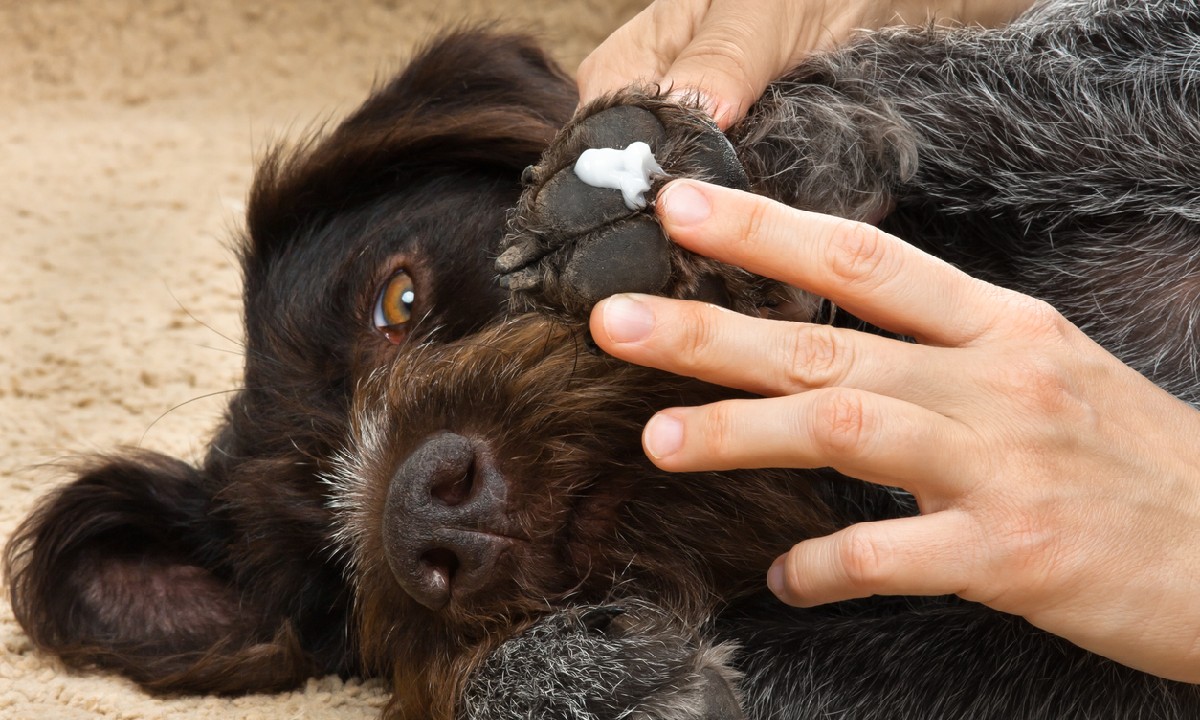Ways to Care for Your Dog’s Precious Paws

Humans protect their feet from trauma by donning shoes or sandals, whereas dogs have paws that provide natural protection. As we all know, dogs are pretty active animals, and as a result, their paws suffer a lot while jumping around gleefully in the backyard or dashing hastily after their favorite toy. Foot care is just as essential for our pets as it is for humans. Our darling pups’ paw pads can become blistered or torn or might even burn if they tread on scorching pavements. Consider the agony of walking with an injured foot; our dogs experience the same when their paws are injured. And if ignored, it can possibly lead to an infection or matting between the toes if your dog licks at the wound.
What Exactly Are Paw Pads?
A dog’s paw pad has a layer of fatty tissue usually covered by a pink or black thin layer of pigmented skin. Since fat is an insulator, it helps to protect your dog’s paw from extremely hot or cold surfaces. Paw pads help your dog maintain balance while also offering grip, stability, and shock absorption. Depending on the terrain you regularly walk your dog, their paw pads may be smooth, fluffy, calloused, and a bit rough.
Care Tips for Your Dog’s Paws
Paw pad maintenance
Inspect your pet’s paw every now and then — better make it a habit. Regularly check and spread your dog’s toes apart and carefully look for any trauma or other particles, such as pebbles or thorns, sticking on the side of the toes. Watch out for any kind of discoloration or edematous swelling. Keep an eye out for any signs of discomfort or soreness in your dog if they avoid wandering around.
Avoid hot pavements
Hot asphalt or pavement might burn your puppy’s paw pads. Place your palm on the pavement and attempt to hold it there for seven odd seconds to test whether the floor is too heated for your dog to walk on. If it’s way too hot for you to walk on it for an extended period, the same is true for your precious pup. Outdoor activities are certainly out of the question if the weather is too hot and you know the floor will be burning hot.
Have short poo breaks for your dog during a hot summer day and let him walk on grass or in a shaded area rather than asphalt. Also, carry a water bottle of cold water along with you for periodic rehydration.
Winter care for precious paws
Winters tend to be tough on dogs — especially with ice, snow, and salt on the roads. None of the ice-melting products are safe if ingested by your dogs. Such products can cause their paws to crack, dry, or even burn. If you can, please avoid walking your pet on salt-treated pathways.
Clip your dog’s furs so ice or snow won’t get between their toes. The snow and ice between the toes turn into snowballs, which later melt due to the body heat. These snowballs can cause severe pain and anguish to your pet because they tend to force the toes wide apart.
Apply Dog Paw Wax
Dog paw waxes are an inexpensive solution to safeguard your dog’s paws if your dog doesn’t like wearing boots or you can’t seem to find one that remains on. Paw wax is super easy to apply and moisturizes the paw pad, making a buffer around your dog’s paw that repels ice, salt, and grime while protecting your dog’s paw pad from burns. Basically, it’ll work as an unseen boot! Apply to their paws right before they go outside.
